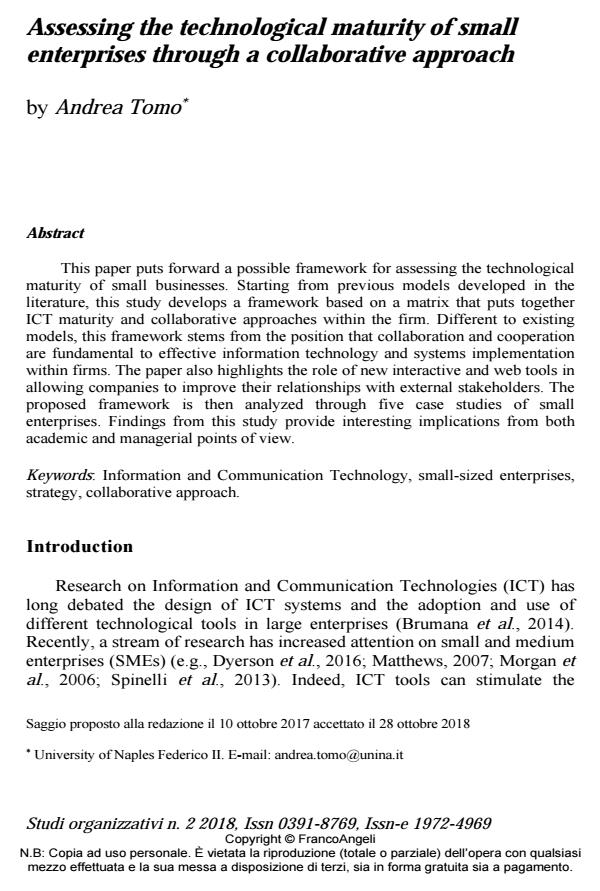Assessing the technological maturity of small enterprises through a collaborative approach
Titolo Rivista STUDI ORGANIZZATIVI
Autori/Curatori Andrea Tomo
Anno di pubblicazione 2019 Fascicolo 2018/2
Lingua Inglese Numero pagine 28 P. 147-174 Dimensione file 250 KB
DOI 10.3280/SO2018-002007
Il DOI è il codice a barre della proprietà intellettuale: per saperne di più
clicca qui
Qui sotto puoi vedere in anteprima la prima pagina di questo articolo.
Se questo articolo ti interessa, lo puoi acquistare (e scaricare in formato pdf) seguendo le facili indicazioni per acquistare il download credit. Acquista Download Credits per scaricare questo Articolo in formato PDF

FrancoAngeli è membro della Publishers International Linking Association, Inc (PILA)associazione indipendente e non profit per facilitare (attraverso i servizi tecnologici implementati da CrossRef.org) l’accesso degli studiosi ai contenuti digitali nelle pubblicazioni professionali e scientifiche
This paper puts forward a possible framework for assessing the technological maturity of small businesses. Starting from previous models developed in the literature, this study develops a framework based on a matrix that puts together ICT maturity and collaborative approaches within the firm. Different to existing models, this framework stems from the position that collaboration and cooperation are fundamental to effective information technology and systems implementation within firms. The paper also highlights the role of new interactive and web tools in allowing companies to improve their relationships with external stakeholders. The proposed framework is then analyzed through five case studies of small enterprises. Findings from this study provide interesting implications from both academic and managerial points of view.
Il presente lavoro intende proporre un possibile framework utile per la valutazione della maturità tecnologica delle piccole imprese. Sulla base di precedenti modelli sviluppati in letteratura, questo studio presenta una matrice costruita rispetto a due dimensioni: la maturità ICT e l'approccio collaborativi all'interno dell'organizzazione. Diversamente dai modelli già presenti in letteratura, il framework proposto si fonda sull'assunzione che collaborazione e cooperazione sono aspetti fondamentali per una efficace implementazione e sviluppo delle tecnologie e dei sistemi informativi. L'articolo, inoltre, mette in evidenza il ruolo dei nuovi strumenti interattivi nel favorire e migliorare le relazioni tra azienda e stakeholders. Il framework è presentato attraverso cinque case studies di piccole imprese, fornendo utili spunti e implicazioni accademiche e pratiche.
Parole chiave:Teconologie dell’Informazione e della Comunicazione; piccole imprese; strategia; approccio collaborativo.
Andrea Tomo, Assessing the technological maturity of small enterprises through a collaborative approach in "STUDI ORGANIZZATIVI " 2/2018, pp 147-174, DOI: 10.3280/SO2018-002007